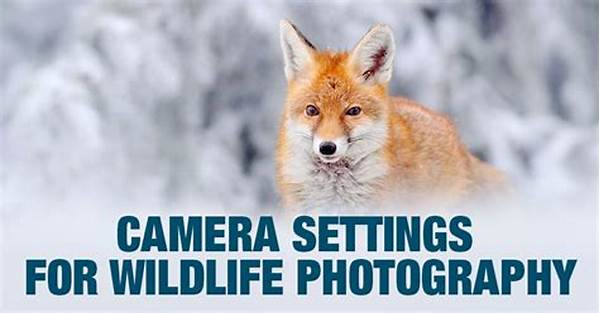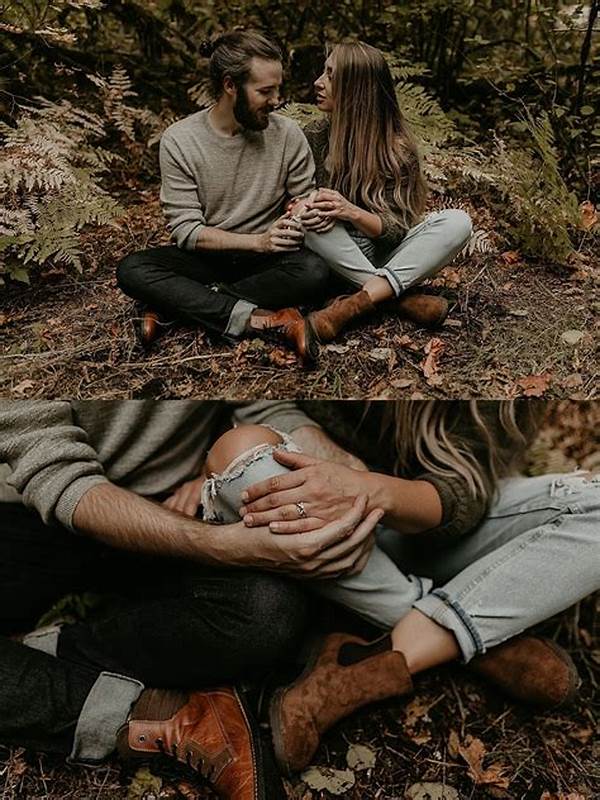Hey there, fellow shutterbugs! If you’re anything like me, juggling camera settings while trying to capture that perfect moment in nature can be a bit of a brain-twister. No worries, though—I’m here to break it down and make it as easy as pie (or maybe as easy as remembering your coffee order!). Today, we’re diving into the best camera settings for nature photography. So grab your camera, a comfy seat, and let’s venture into the wild world of apertures, shutter speeds, and ISOs.
Read Now : Creative Photo Retouching Training
Understanding Your Camera: The Basics of Nature Photography Settings
First things first, let’s chat about what makes the best camera settings for nature photography. Whether you’re an early bird capturing dew-kissed landscapes or a night owl snapping starry skies, understanding your camera’s core settings is crucial. Aperture is your buddy for controlling light and depth of field. For sharp landscapes, try a smaller aperture (larger f-number) like f/8 or f/11. For that magical bokeh effect, open up with a larger aperture like f/2.8. Shutter speed plays a vital role too. Fast speeds (1/500s or faster) freeze action, which is great for capturing energetic wildlife, while longer exposures are perfect for silky waterfalls or light trails. Don’t neglect ISO; keeping it low (like 100 or 200) ensures crisp shots with minimal grain. Remember, the best camera settings for nature photography depend largely on the lighting and conditions you’re dealing with.
In sunny conditions, you’ll often find yourself using a lower ISO and faster shutter speed. But when those gorgeous golden hours or moody overcasts roll in, you might need to crank that ISO up a notch. Consider using auto ISO as a lifesaver in changing light environments. Auto setting adjustments can make life so much easier when you’re chasing light through a forest or waiting for the perfect sunset. Playing around with white balance can also add an extra oomph to your photos; think warm tones for sunrise/sunset and cooler tones for an overcast look. Ultimately, the best advice? Shoot in RAW format. This file type gives you the freedom to tweak settings in post-processing without losing image quality. This flexibility can make all the difference when dialling in the best camera settings for nature photography.
Processing your shots is just as essential as taking them—the magic happens when you can play with your exposés and tones to personalize your artistic vision. Don’t hesitate to experiment and find what works best for you; after all, nature photography is as much about creativity as it is about technique. So, next time you’re out in the wild, keep these settings in mind, snap away, and most importantly, enjoy the beauty around you while practicing the best camera settings for nature photography. Happy shooting!
Quick Tips: Best Camera Settings for Nature Photography
1. Start with aperture priority mode for flexible depth of field. It’s a great way to explore the best camera settings for nature photography.
2. High shutter speed is crucial for catching fast-moving animals, capturing the essence of nature’s vibrancy.
3. Keep ISO as low as possible to maintain image clarity, one of the best camera settings for nature photography.
4. Engage the histogram feature to ensure your exposures aren’t off the mark.
5. Don’t forget to use a tripod for stability during long exposures, enhancing your best camera settings for nature photography.
Experimenting With Light: The Artistic Side of Settings
Diving deeper into the artistic side of the best camera settings for nature photography can really elevate your shots from ordinary to extraordinary. One approach is playing with light. Consider shooting during the golden hour when the soft, diffused light creates a natural glow. This is perfect for highlighting textures and colors in landscapes. Another fun technique is backlighting, where the light source is behind your subject. This style can create stunning silhouettes and lend a dreamy quality to your photos. Catching the rays peeking through the trees or around edges can add a magical touch to your compositions.
Don’t shy away from post-processing to further refine your artistry. Editing software offers tools that can help you bring out the best in your nature shots, adjusting exposure, contrast, and colors to suit your creative vision. You can even play with different presets or filters to create unique moods and vibes. Remember, photography is a form of self-expression, so while there are fundamental principles to follow, there’s no right or wrong way to capture nature. Embracing the best camera settings for nature photography allows you to explore and develop your own style, reflecting how you see and experience the natural world.
Read Now : Capturing Feline Agility In Photos
Tools of the Trade: Must-Have Gear for Capturing Nature
Venturing into nature requires more than just knowing the best camera settings for nature photography—it also involves having the right gear. First on the list is a sturdy tripod. Why a tripod? Stability is essential for capturing those stunning long-exposure shots or simply keeping your images sharp. A polarizing filter can also be a game-changer, reducing glare and enhancing colors, particularly when shooting water or vibrant skies. And don’t forget about the lens! A versatile zoom lens is your best friend in the field. This allows you to switch between wide-angle landscapes and detailed close-ups of wildlife without missing a beat.
Weather conditions can be unpredictable, so a good camera bag is crucial to protect your equipment. Look for a bag with compartments that enable you to keep everything organized and easily accessible. Having a rain cover for your gear can save the day when sudden showers appear. Lastly, packing extra batteries and memory cards is a no-brainer. Running out of power or storage during a shoot would be tragic! Having these items on hand will ensure you’re always prepared to capture the best nature shots, rain or shine. Together with knowing the best camera settings for nature photography, this gear will set you up for success and enhance your outdoor adventures.
Composition is Key: Framing for Impact
When it comes to shooting stunning nature photography, composition is a game-changer. Utilizing the best camera settings for nature photography will get the technical side covered, but composition will breathe life into your images. One fundamental approach is the Rule of Thirds. Imagine breaking your image into thirds, both horizontally and vertically. Positioning key elements along these lines can create a naturally balanced and engaging photo. Another creative angle is leading lines; they guide the viewer’s eyes through your image, creating a journey-like experience. Roads, rivers, or paths make excellent leading lines in nature photography.
Keep in mind the importance of foreground interest. While sweeping landscapes are awe-inspiring, adding a bit of foreground detail can provide depth and scale. This could be anything—from a pretty flower to a rock formation that anchors the scene and draws the viewer in. Negative space is another composition trick that can create mood or emphasize a subject. It can evoke feelings of isolation, solitude, or grandeur when used effectively. Capturing different perspectives or angles can also turn a mundane shot into something extraordinary. Crouching low or finding a higher vantage point can offer a fresh take on familiar scenes. Coupling these composition techniques with the best camera settings for nature photography will help you convey the story you want your images to tell.
Keep it Real: The Beauty of Authenticity
Hey, let’s get real for a second! When shooting in nature, it’s super important to keep it authentic. Sure, we all love dramatic edits and surreal landscapes, but sometimes, the raw beauty in front of us is enough. The best camera settings for nature photography help showcase what’s already there. It’s about showcasing the majesty of nature as it is.
When I head out, I always remind myself to let the scene speak for itself. There’s a unique sort of magic in capturing the sunrise, the first snowflakes of winter, or that tiny critter scurrying by. It’s all about keeping it true to the moment. Focus on the story nature is already narrating, and half your job is already done! Trust in the natural elegance, get the best camera settings for nature photography just right, and the result? Photos that capture the heart and soul of the great outdoors.
Why Settings Matter: Conclusion
As we wrap up this journey through the best camera settings for nature photography, remember, there’s no one-size-fits-all. Each day out in the field brings new lighting conditions, different subjects, and unique opportunities to capture the natural world. The gear and settings we use are only tools to enhance our creative vision. What truly creates magic in our photos is the connection we feel with our surroundings and our excitement to share that beauty with the world.
Let your intuition guide when to use each setting. Play around, experiment, and develop your unique style. Nature photography is about embracing unpredictability and finding beauty in every moment. With practice, patience, and a dose of curiosity, you’ll master the best camera settings for nature photography, producing images that not only capture nature’s wonder but also tell your personal story within it. So, get out there, have fun, and let your creativity run wild!



